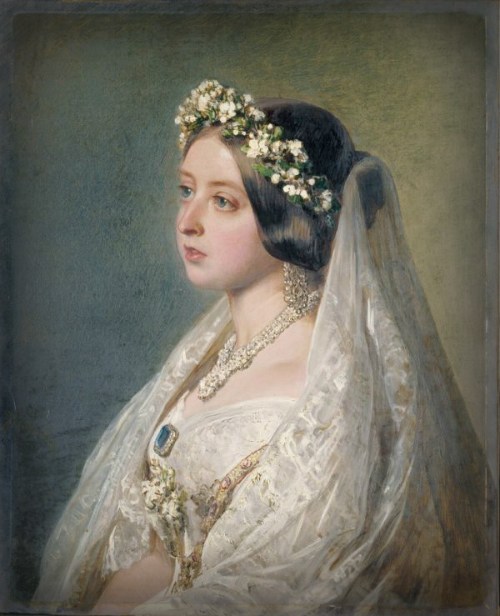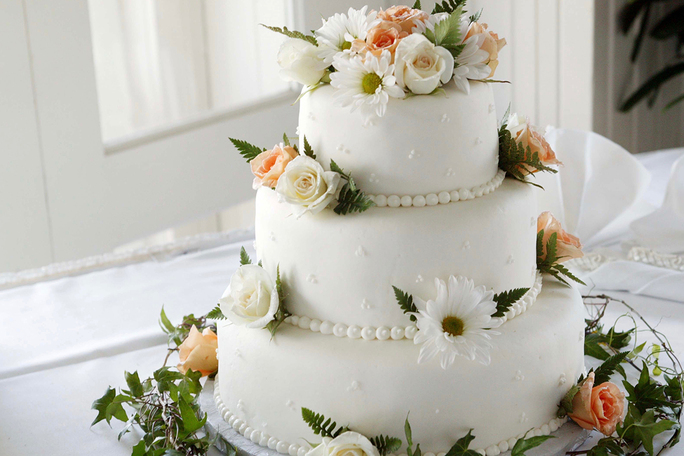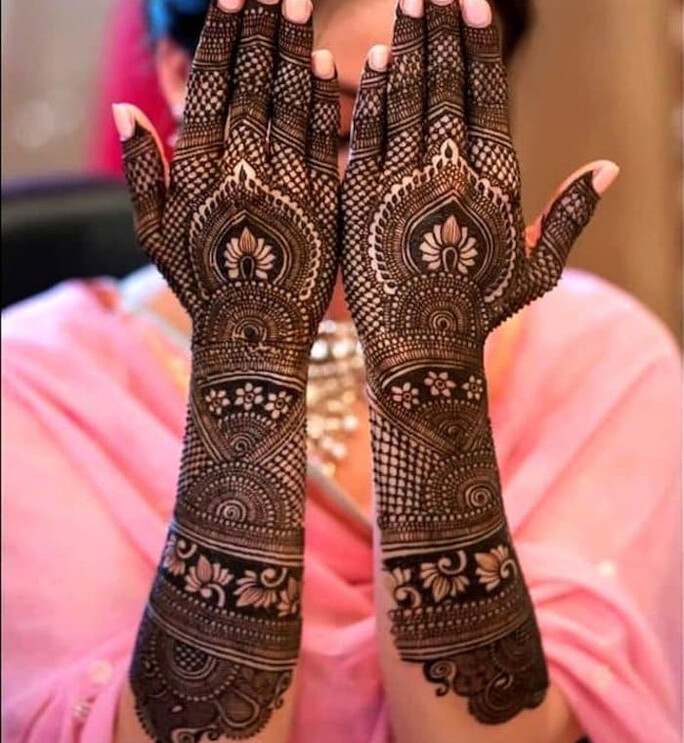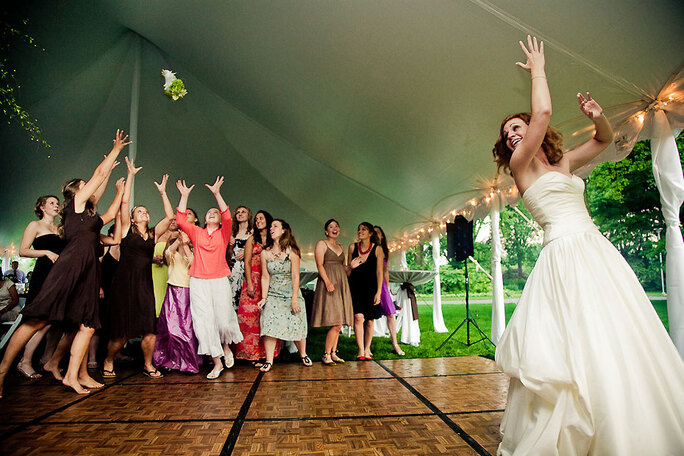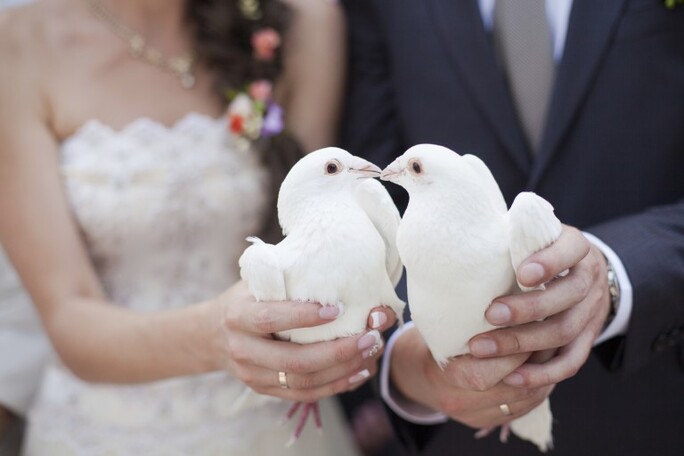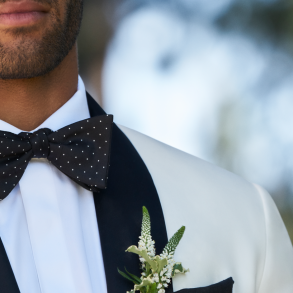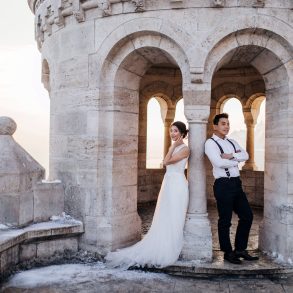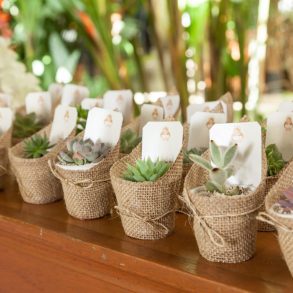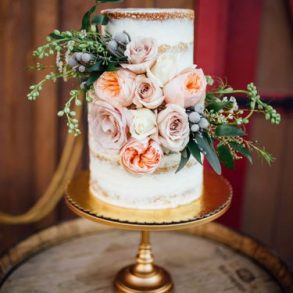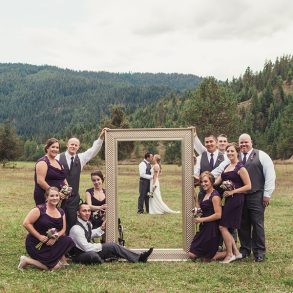1. The White Wedding Dress
The tradition of a bride wearing a white dress started around 1840 when Queen Victoria married Prince Albert. Her white lace and silk-satin gown represented wealth at the time instead of purity. This started a new trend of brides wanting to wear white. Many brides still wear white today, but you’ll still see the occasional ivory, black, and even PINK wedding dress!
So what about before the mid-1800s? Many brides wore red—something brides in China, South Sudan, and Singapore still do today! They also wore blue because it was associated with the Virgin Mary and didn’t show stains.
2. The Wedding Veil
A bride wearing a wedding veil started from the middle ages to ancient Rome. It was traditionally worn as a symbol of purity and modesty, but also to protect the bride from evil spirits! Some cultures used the headwear during arranged marriages to hide the bride until the ceremony.
3. Wearing a Wedding Ring
This tradition came from ancient Rome. The Romans believed the vein in the third finger of the left hand ran straight to the heart. (Aww) Physiologists have debunked that myth, but couples still follow it today! The circle of the ring symbolizes everlasting love since it has no end.
4. Eat a Wedding Cake
Fun fact: As a symbol of fertility, the wedding cake was actually thrown AT the bride for good luck. Luckily, that tradition ended around 100 BC when Roman bakers started baking small, sweet cakes to eat during the ceremony.
Today, many brides opt for cupcakes or even donuts instead of a traditional cake.
5. Having a Wedding Party
In early Roman times, bridesmaids would dress similarly to the bride to confuse her exes and outsmart evil spirits. The spirit wouldn’t be able to tell which woman in the group was the bride.
Originally, the best man was in charge of watching the bride—and making sure she didn’t escape during the ceremony. This happened quite often and turned into a literal “Runaway Bride” moment. The man is called the “best” man because he was the strongest and most capable to fight off enemies and rival attackers that came during the ceremony.
Brides today choose female relatives and friends as a way to honor them and to provide emotional support on her wedding day. It’s still a popular option to have all the bridesmaids match, but newer trends have bridesmaids wearing an ombre of colors and styles to fit their personality. Today, the groom’s “best man” is typically a brother or best friend.
Isn’t it nice that bridal parties today just need to smile and stand there?!
6. Mazel Tov
If you’ve been to a Jewish wedding, guests will call out “mazel tov!” at the end of the ceremony when the groom crushes glass with his foot. It means “good luck” and a start to a happy marriage.
There are two different thoughts behind the breaking of the glass. One theory is that the glass symbolizes the destruction of the temple in Jerusalem in 70 AD. Others say it’s a reminder that joy should always be tempered. Let’s hope it’s the latter! Either way, the tradition is received in a spirit of happiness today.
7. The Art of Mehndi
Back in 12th century AD, the art of Mehndi was introduced to India. Mehndi is the art of applying plant dye henna designs on hands and feet. Indian brides today still have bridesmaids and family members decorate her body.
The temporary designs last a few weeks and take hours to apply. For Hindu weddings, henna symbolizes joy, beauty, and spiritual awakening.
8. Father Walking the Bride Down the Aisle
This tradition dates back to when arranged marriages were more popular. The act of “giving away” the bride literally meant she was being transferred of ownership. Today, the tradition is all about blessing and accepting the marriage and welcoming the groom into the family.
9. Tossing the Bouquet
This English tradition has definitely evolved. Back in the day, single women would try and tear off a piece of the brides’ dress for good luck! To keep the single ladies at bay, brides now toss their bouquet and the woman who catches it is supposedly the next one to get married.
10. Jumping the Broom
Today, broom-jumping is most often found in African-American weddings—a callback to their roots. In the days of slavery, enslaved men and women were not allowed to get legally married. Instead, they’d jump over a broom together to declare their union.
A number of cultures from Celts to Gypsies have incorporated a leaping act into their ceremonies.
11. Releasing Doves
Did you know that white snow doves were used as gifts from the bride to the groom? That’s true according to ancient Greek and Roman times. In biblical passages, white doves symbolize holiness, innocence, and fidelity. They build their nest together, fall in love and mate for life.
The idea of releasing doves on a wedding day actually started in the Philippines. The wedding guest that catches the doves after released can take them home as pets!
12. The Money Dance
Want to make some quick, easy money as newlyweds? Have a money dance at your reception! This fun dance originated in Poland in the 20th century but is customary around the world—most notably Greece.
When the money dance is announced, guests can pay the groom to dance with his new bride. The collected money is typically used on their honeymoon.

